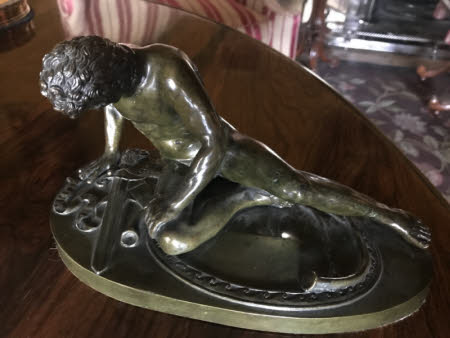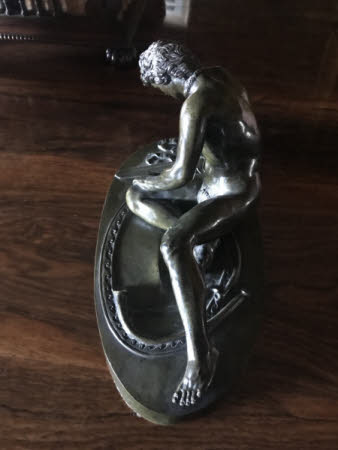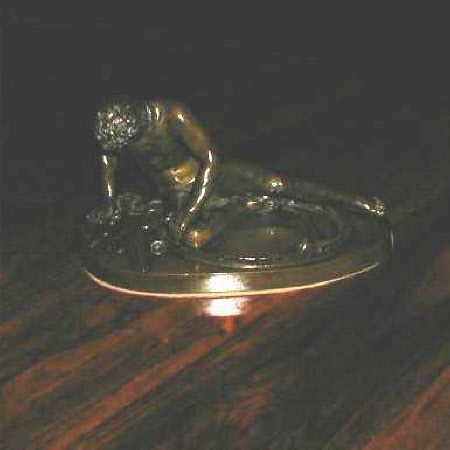The Dying Gaul
Category
Art / Sculpture
Date
1801 - 1900
Materials
Bronze on bronze oval base
Measurements
143 x 270 x 140 mm
Order this imageCollection
Belton House, Lincolnshire
NT 435473
Summary
Bronze on bronze oval base, The Dying Gaul, French or Italian, after the antique, 19th century. The Gaul, wounded in battle, lies slumped on his fallen shield with his sword, belt and trumpet around him. His torso is gashed, his head droops heavily. He is nude, with the exception of a torc, a type of neckband worn by Celts, and a fig-leaf, probably a later addition. Mounted on a separately cast bronze base.
Full description
The marble from which this bronze reduction derives is thought to be a Roman copy of a lost Hellenistic bronze made to commemorate the victory of the Greeks, led by Attalus I of Pergamon (269-197 BC), over the Galatians, Gallic people who resided in Anatolia. The Roman marble was first recorded in the Ludovisi Collection (1623), before its acquisition by Pope Clement XII (Haskell and Penny 1981, p.224). It was ceded to the French during the Napoleonic era but was returned to the Capitoline after the Battle of Waterloo (1815), where it resides today. Until the 19th century the subject was interpreted as a dying gladiator, wounded in combat at the amphitheatre. For its pathos and realism, the Dying Gaul is universally praised. The first known copy was cast in plaster for Philip IV of Spain; others were produced for the French Academy in Rome, and for Louis XIV. Large-scale copies were produced by Peter Scheemakers (1691-1781) for the gardens at Rousham, and by Simon Vierpyl (c.1725-1810) for Lord Pembroke’s seat, Wilton (Haskell and Penny, p.225) The Dying Gaul was cast in bronze by Luigi Valadier (1726-85) for the Duke of Northumberland’s mansion, Syon (ibid). Notable bronze reductions were made in the 17th century by Gianfrancesco Susini and by the Zoffoli foundry in the 18th (ibid). This example is likely a 19th century cast, made for the Grand Tour market. See similar examples in National Trust collections at Felbrigg (NT 637918) and Gunby Hall (NT 1399467). Alice Rylance-Watson October 2018
Provenance
Purchased with a grant from the National Heritage Memorial Fund (NHMF) from Edward John Peregrine Cust, 7th Baron Brownlow, C. St J. (b.1936) in 1984.
Credit line
Belton House, The Brownlow Collection (acquired with the help of the National Heritage Memorial Fund by the National Trust in 1994)
References
Haskell and Penny 1981: Francis Haskell and Nicholas Penny, Taste and the Antique, The Lure of Classical Sculpture 1500 - 1900, New Haven and London, 1981, no.44, pp.224-7


